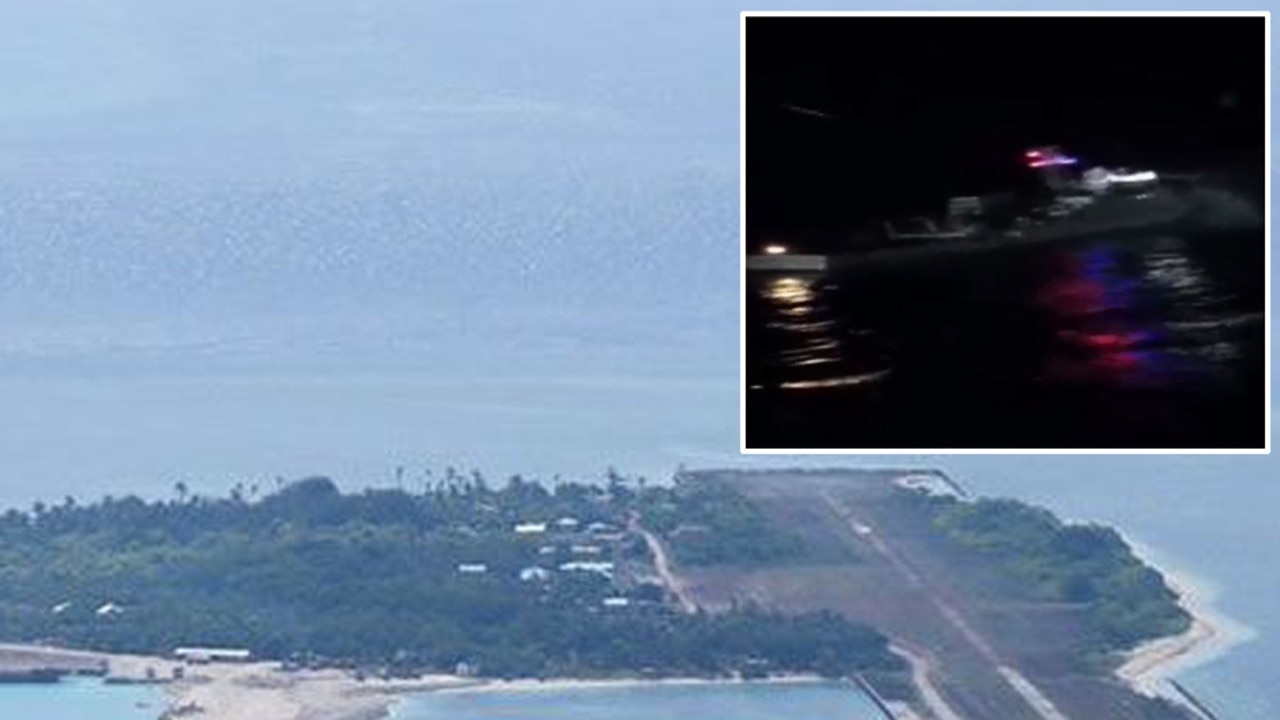Fury as China blasts Filipino boats with water canons
A tense confrontation has taken place between Chinese and Philippine vessels in the hotly-contested South China Sea.
Footage has emerged of Chinese coast guard vessels blasting water cannons at Philippine supply boats in a disputed area of the South China Sea.
The Philippine vessels had been attempting to ferry food supplies to military personnel on Second Thomas Shoal in the contested Spratly Islands.
They were intercepted and blocked by three ships from the Chinese coastguard who fired water cannons at the supply ships. The harried Philippine vessels were forced to turn back.
The incident took place within the Philippine exclusive economic zone on Tuesday. There were no injuries reported.
Philippine Foreign Minister Teodoro Locsin said he had expressed “outrage, condemnation and protest” to Beijing over the incident
“The acts of the Chinese coast guard vessels are illegal,” he said.
“China has no law enforcement rights in and around these areas. They must take heed and back off.”
He said the “public” vessels were covered by a mutual defence pact with the United States.
China accuses Philippines of trespassing in South China Sea
Chinese Foreign Ministry spokesman Zhao Lijian accused the Philippine boats of “trespassing” in the area, which China calls Ren’ai Jiao.
“On the evening of November 16, two Philippine supply boats trespassed into waters near Ren’ai Jiao of China’s Nansha Qundao without China’s consent,” he said at a press conference.
“Chinese coast guard vessels performed official duties in accordance with law and upheld China’s territorial sovereignty and maritime order.
“At present, the sea area of Ren’ai Jiao is generally tranquil. China and the Philippines are in communication on this.”
South China Sea tensions spike
Tensions over the resource-rich seas spiked this year after hundreds of Chinese vessels — dubbed the maritime militia — were detected at Whitsun Reef, which is also in the Spratly archipelago.
China claims almost all of the sea, through which trillions of dollars in trade passes annually, with competing claims from Brunei, Malaysia, the Philippines, Taiwan and Vietnam.
The contested waters also have valuable fishing grounds and are believed to sit atop vast oil and gas deposits.
Beijing has ignored a 2016 ruling by The Hague-based Permanent Court of Arbitration that its historical claim over most of the sea to be without basis.
A report by the Strategic and International Studies, released yesterday, described the maritime militia as “paid agents of the Chinese government — obligated to help fulfil its political and national security objectives.”
‘We do not ask permission’
China controls several reefs in the South China Sea including Scarborough Shoal – which Beijing seized from Manila in 2012 – and is just 240km west of the main Philippine island of Luzon.
It has asserted its stance by building up small shoals and reefs into military bases with airstrips and port facilities.
After China occupied Mischief Reef in the mid-1990s, the Philippines marooned a derelict navy vessel atop the nearby Second Thomas Shoal to assert Manila’s territorial claim. Members of the Philippine Marines are based there.
Mr Locsin warned China’s “failure to exercise self-restraint threatens the special relationship” between the two countries.
“We do not ask permission to do what we need to do in our territory,” he said.
The Chinese embassy in Manila did not immediately respond to a request for comment.
Outgoing President Rodrigo Duterte has sought to pivot away from the United States, the Philippines’ former colonial master, towards China since taking power in 2016 and has appeared reluctant to confront Beijing.
But facing growing domestic pressure to take a harder line, Mr Duterte has insisted Philippine sovereignty over the waters is not negotiable.
Cabinet Secretary Karlo Nograles said on Thursday: “We will continue to assert our sovereignty … over our territory.”
In July, Mr Duterte walked back on a decision to axe a key military deal – the Visiting Forces Agreement – with the United States during a visit by Pentagon chief Lloyd Austin.
In a joint statement issued this week, the two countries reaffirmed “our treaty commitments” that include “obligations to respond to an armed attack in the Pacific Area on either the United States or the Philippines”.
– With AFP
For all the latest Technology News Click Here

